Nissan Leaf Preview 2025: Price, specs & boot space
Written by Matt Robinson
Quick overview
Pros
- Looks more stylish than before
- Impressive range figures
- Classy interior
Cons
- Do we need yet another electric SUV?
- Charging rates are nothing special
- We haven't driven it yet
Verdict: Is the Nissan Leaf a good car?
"The Nissan Leaf is a great entry to the electric car world. It demands few compromises, has punchy acceleration, comes well equipped, and it drives better than many rivals while undercutting them on price. True, the range isn’t class-leading, but it’s a great all-rounder that makes it a viable alternative to many fossil-fuelled rivals."
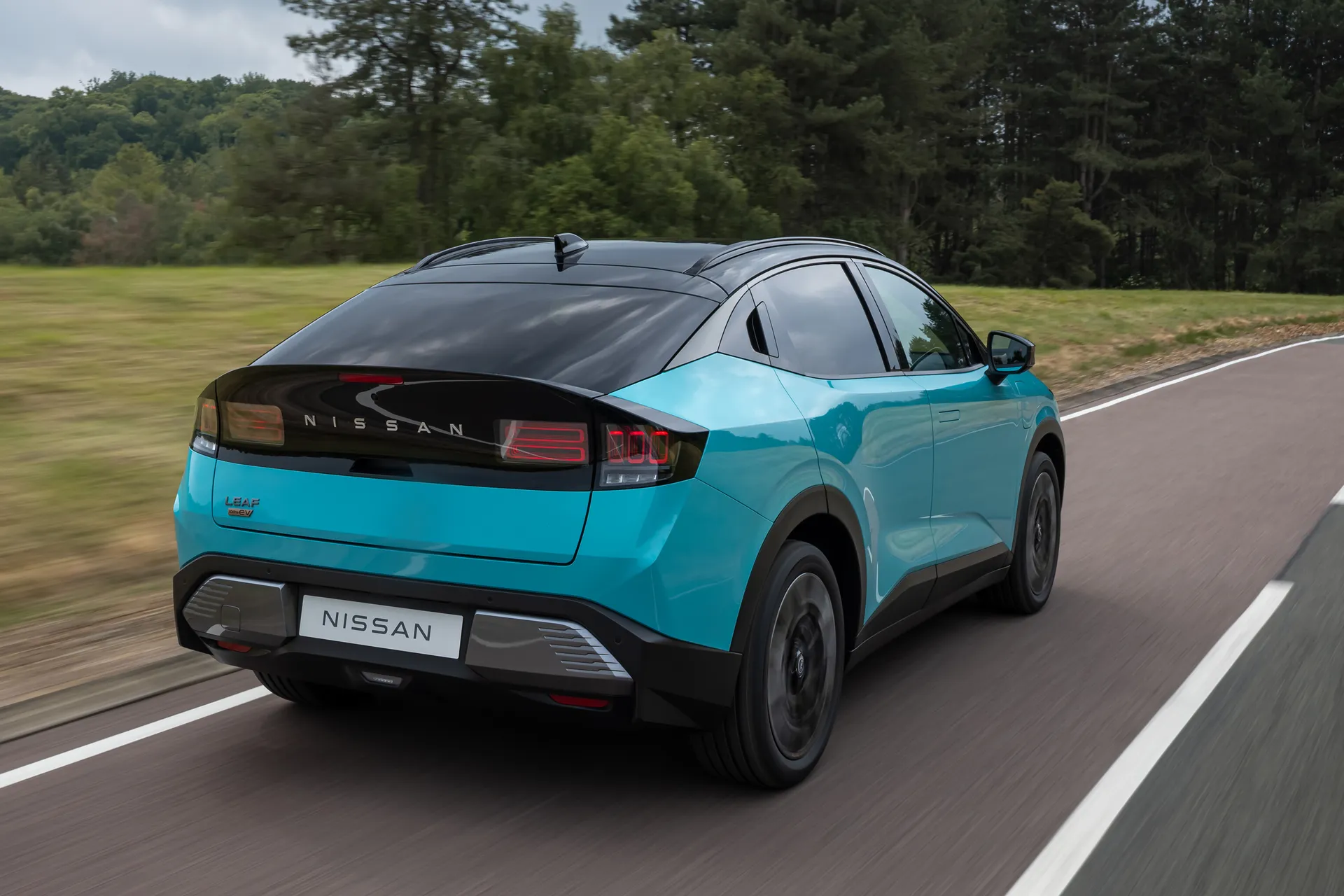
Once one of the real trailblazers of the electric car world, the Nissan Leaf has been falling away for some time now. The range and charging stats of the second-generation model aren't exactly earth-shattering, and while some of us might have found it refreshing to see a model that isn't yet another SUV, high-ish riding crossovers are where the market is at.
It's no surprise, then, to see that the all-new, third-generation Nissan Leaf is, drumroll please, an SUV. Looking very much like a baby Nissan Ariya and arguably all the better for it (if you squint, you might detect some of the Nissan Z sports car at the rear), the new Leaf seems bang up to date before you even look at the numbers.
Happily, those look very competitive as well. There is a choice of two battery packs, with the bigger one offering up to 375 miles on a full charge, and the smaller one a still very impressive 275 miles.
Straight-line performance will be healthy, if not mind-blowing, and if the related Ariya is anything to go by, the Leaf should drive very nicely indeed. We say 'should', because the new Leaf was only very recently revealed, and we haven't driven it.
We'll be updating this page as soon as we have, but for now, here's anything we know about it. Alternatively, if you're looking for the outgoing model, see our 2014-2024 Nissan Leaf review.
Looking for a used car for sale? We've got 100s of Nissan Approved Used Cars for Sale for you to choose from, including a wide range of Nissan Leafs for sale.
Is the Nissan Leaf right for you?
If you're after an EV that's practical without being too large, absolutely. The only problem for the Leaf is that the same can be said of the Kia EV3, Skoda Elroq, Volvo EX30 and many, many more similarly sized options. We'll have to wait and see how the Leaf shapes up in terms of pricing and specs to see if it shines through in a busy area of the market.
What's the best Nissan Leaf model/battery to choose?
As far as the battery goes, that all comes down to how often you'll be undertaking longer journeys. The range of the standard pack should be more than enough for most drivers, so if you can avoid having to pay more of the Extended battery, it's worth doing so. We can't comment on which trim to go for just yet, as these haven't been confirmed for the UK at the time of writing.
What other cars are similar to the Nissan Leaf?
While the old Leaf was a little difficult to pigeonhole, the new one sits in one of the most hotly contested corners of the market, so it'll have no shortage of rivals. Cars like the Skoda Elroq and Kia EV3 offer similar range figures and are around where we expect the Leaf to be in terms of price. Although it's a hatchback rather than an SUV, the Volkswagen ID.3 is also a car the Leaf could be cross-shopped with.
Comfort and design: Nissan Leaf interior
"The new Leaf's interior isn't anything like the dated cabin of the old model, taking a lot of inspiration from its bigger brother."
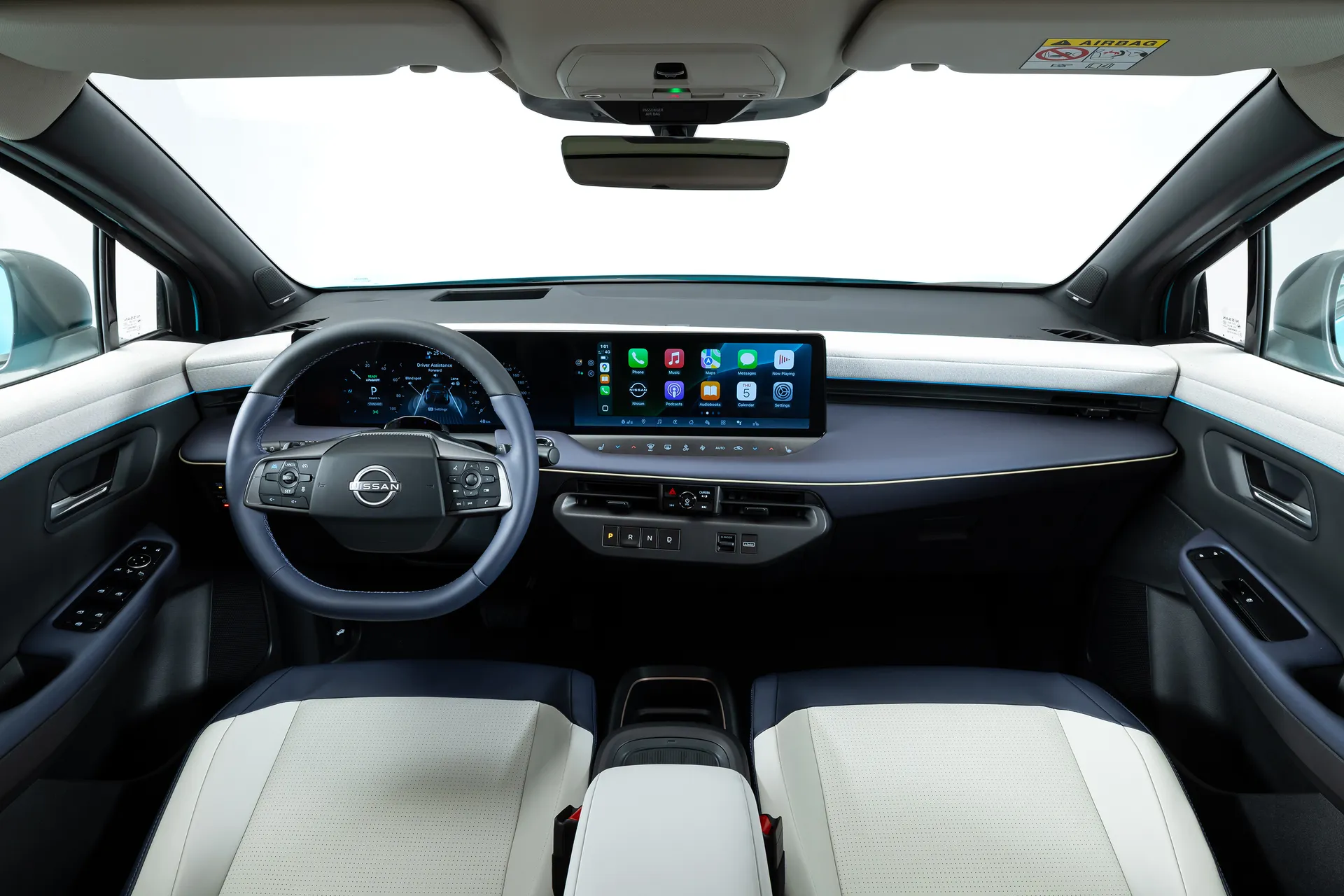
The cabin of the outgoing Leaf was one of the elements that dated it the most. What's inside the new car, thankfully, is entirely different, but at the same time quite familiar. That's because, unsurprisingly, the link to the larger, closely related Ariya is very clear.
The Leaf gets the very much in vogue widescreen panel featuring both an infotainment screen and a digital instrument cluster, underneath which are haptic buttons integrated into the dashboard. Again, the latter can also be found in the Ariya.
The new Leaf is actually a bit shorter than the old one, but it's taller and wider, so we're expecting improved head and shoulder room for those in the back.
An optional panoramic roof should make the cabin more airy, but without eating into headroom. It's an electrochromatic panel, meaning it's dimmable, negating the need for an electronically retracting blind.
Quality and finish
We won't know for sure until we've had a poke around the new Leaf's cabin ourselves, but given the relationship with the Ariya, we've reason to be hopeful for a high-quality, well-finished cabin. The Ariya was a noticeable step forward compared to the Nissan cabins we'd gotten used to in terms of its premium feel and the quality of the materials used.
Infotainment: Touchscreen, USB, nav and stereo in the Nissan Leaf
The Leaf gets a sizeable 14.3-inch touchscreen infotainment system running Google software, which makes a great deal of sense. Why bother persevering with your own navigation system, which many users will simply ditch in favour of connecting their phones via Android Auto or Apple CarPlay and using Google Maps?
Setups like the Leaf's and other Google-based infotainment systems (those of Polestar, for instance) effectively cut out the 'middle' man. They come pre-installed with various apps, with further compatible apps available from the Google Play Store as well, including YouTube (to use when stationary, of course).
A Bose sound system has been developed for the car, including a headrest speaker reserved for navigation and phone announcements, so others in the car won't have their favourite track interrupted by a loud voice harping on about turning left onto the A34. It's unclear if this will be an optional extra and/or reserved for the higher trim levels.
Space and practicality: Nissan Leaf boot space
Despite shrinking in terms of length, the Leaf has more load space than its predecessor at 437 litres. That's a little way off a Kia EV3, but a bit better than what's offered in a Volvo EX30.
There's a moveable boot floor and a 60/40 folding rear seat bench, although a figure for the total load space with it folded isn't available just yet. For the first time, the Leaf is available with a powered tailgate. Roof rails will also be available should you wish to build on the boot space with a top box, or carry some bicycles.
Handling and ride quality: What is the Nissan Leaf like to drive?
"We haven't driven the Nissan Leaf just yet, but we're expecting it to feel quite similar to the closely related Ariya."
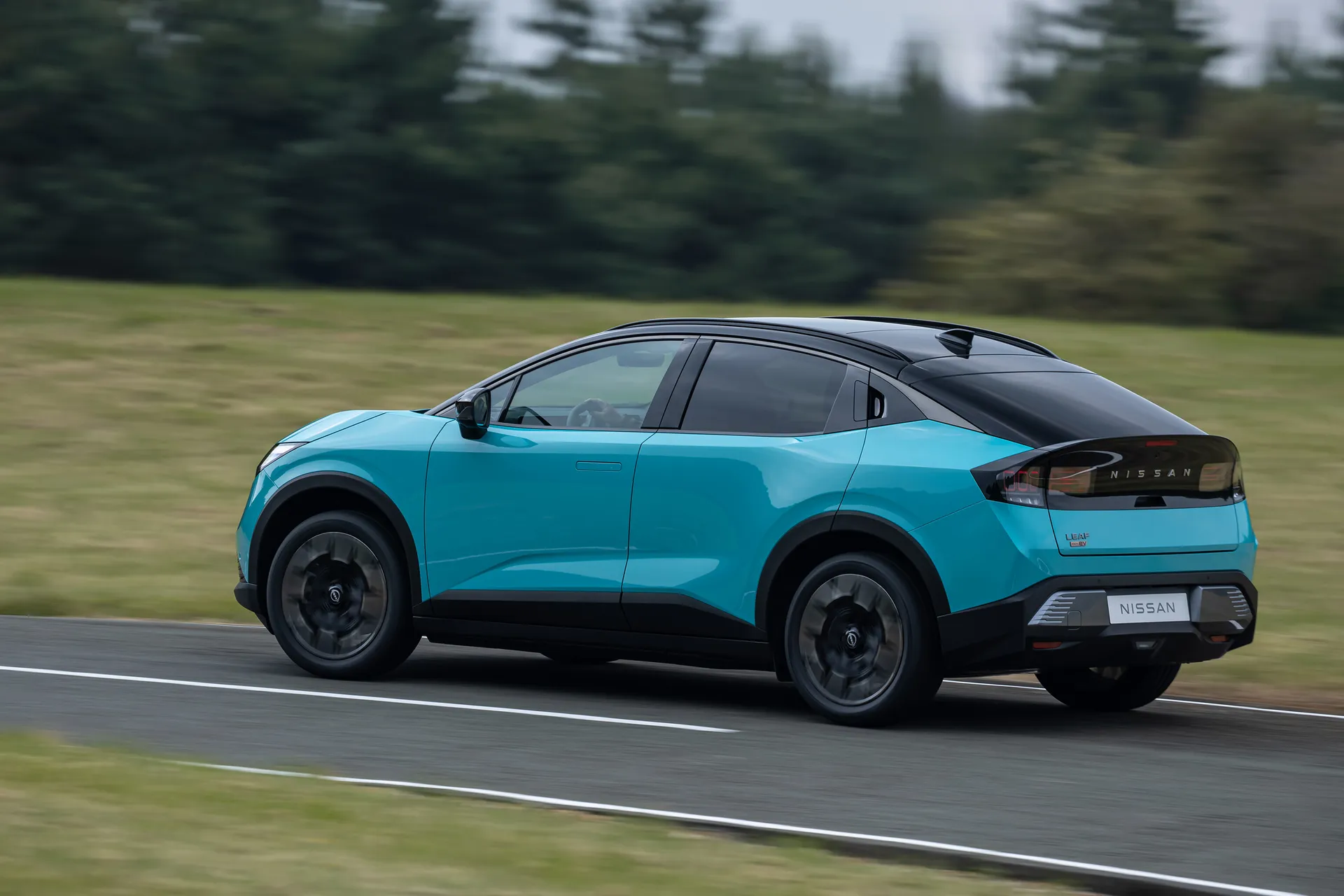
If that's the case, it'll offer a good balance between comfort and composure, without ever being particularly exciting. For most, that'll be perfect.
It's pleasing to see Nissan hasn't gone too excessive with the wheel sizes. Unlike the Skoda Elroq, for example, which can be fitted with wheels from 19 inches up to 21 inches in diameter, the standard option for the Leaf is 18 inches, and 19 inches is as big as you can go. This should help in terms of comfort.
What batteries and motors are available in the Nissan Leaf?
Keeping things relatively straightforward, your chosen size of Leaf battery also determines the motor output. The 52kWh battery has a 177PS, 345Nm motor, while the 75kWh 'Extended' battery has a unit outputting 218PS and 355Nm of torque. In each case, the motor is fitted to the front axle.
There's no word on performance figures, but we'd expect the 0-62mph time of each to dip under 10 seconds, if not drastically so. Expect effortless and brisk acceleration rather than anything you'd describe as 'fast'. It'll be a pleasant car to drive around town, with Nissan's 'e-Pedal' one-pedal driving system included. Levels of regeneration can be adjusted via steering wheel-mounted paddles.
The Ariya is available with a dual motor setup to give all-wheel drive, and although it's not clear whether or not the Leaf will get the same treatment, it's not something we're expecting.
Safety equipment: How safe is the Nissan Leaf?
The new Nissan Leaf hasn't yet been tested by Euro NCAP, but the Ariya, which sits on the same platform, achieved the full five stars when assessed by the safety body in 2022. Time will tell if it's the same case for the Leaf, but that shows cause for optimism.
Standard-fit safety equipment includes lane-keeping assistance and a driver attention monitoring system. There's also Nissan's ProPilot Assist system, a clever cruise control that can adapt your speed for bends and changing speed limits as necessary.
Potentially helping avoid low-speed knocks is something called 'Invisible Hood View', which uses the front-mounted camera and the two screens to allow the driver to look 'through' the bonnet at obstacles. Front Wide View, meanwhile, uses a 180-degree camera to help you see past parked cars.
Maximum EV range in the Nissan Leaf
The WLTP figures for the Leaf (still pending homologation) are 270 miles for the standard battery and 375 miles for the Extended pack. This compares favourably for the Skoda Elroq, which manages 232 miles, 260 miles or 360 miles depending on which of its three available battery packs you choose.
One of the big factors that make official WLTP range figures so difficult to achieve away from the lab in which they were obtained is that EVs struggle for efficiency at dual carriageway/motorway speeds, where UK drivers tend to clock a lot of their miles. To give a clearer picture of how the car might fare in such situations, Nissan has taken the unusual step of publishing figures from a test involving a Leaf blatting around a track at a sustained 80mph, in which case the battery was all of ideas in just over 200 miles.
Charging times: How much does it cost to charge the Nissan Leaf?
"The 150kW recharging capacity of the new Leaf might not sound impressive when some cars now manage beyond 300kW, but it's similar to rivals like the Skoda Elroq."
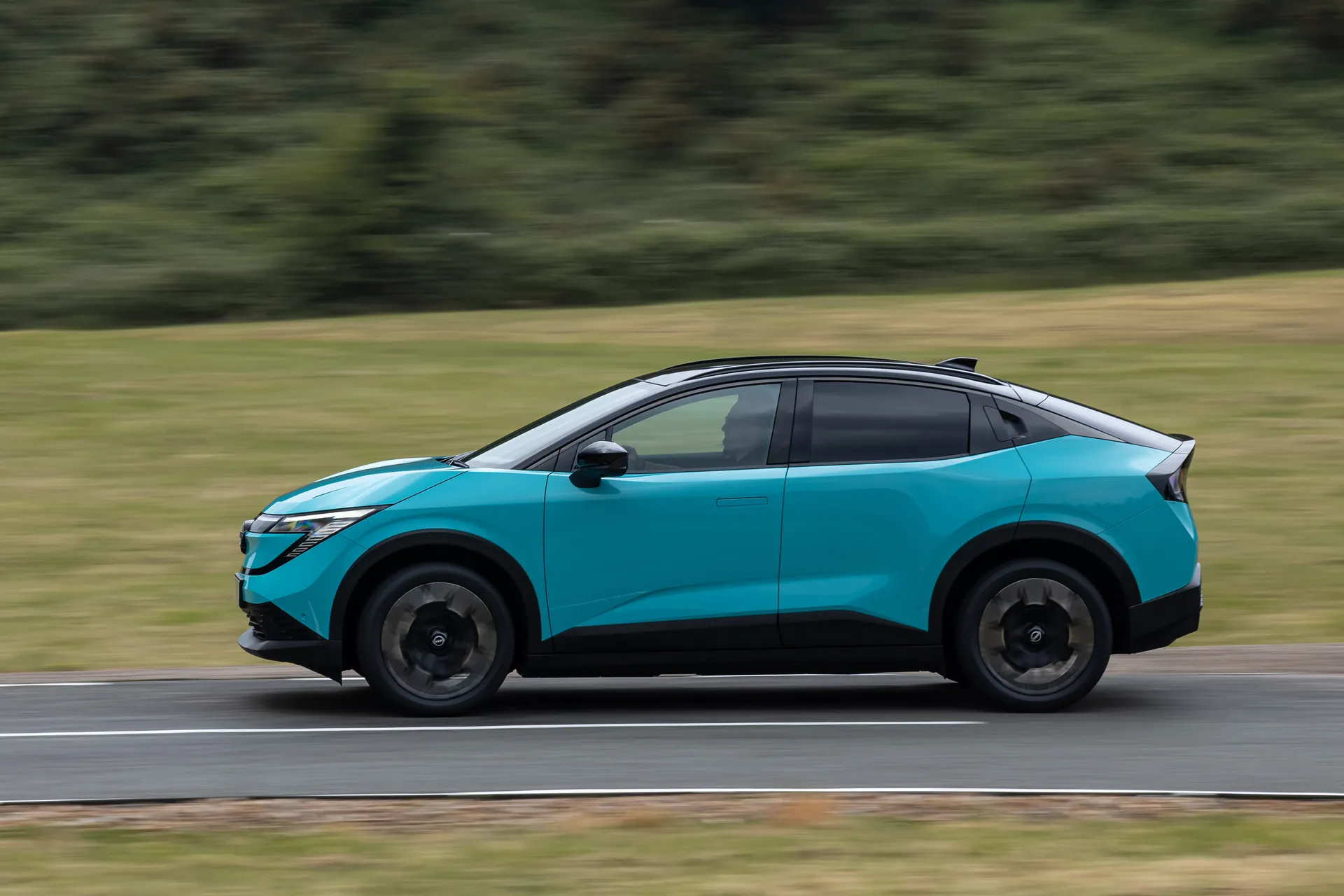
So far, the only charging figure we have for the Leaf is that 260 miles of range can be added in around 30 minutes, a figure which hasn't been homologated just yet. We're assuming this is somewhere in the region of a 10-80% charge for the bigger battery.
The Leaf's battery has a thermal management system that works together with Google Maps, setting the battery temperature to an optimal level when approaching a fast charger. Google Maps will also suggest convenient charging stops along your route. You won't be left hunting for a spare CHAdeMO hook-up, either, with the new Leaf finally ditching the largely abandoned connector type for the more common CCS setup.
A full charge from near empty of the smaller battery using a 7.4kWh home wallbox should take about seven hours, and it'll be just over 10 for the larger one. You shouldn't charge from a three-pin plug if you can avoid it, but if you must, it'll take about three times as long.
It should cost around £13 for the smaller battery and £18 for the bigger one on the average UK tariff, but savvy EV owners will get themselves on a variable tariff and charge when the per kWh cost drops, potentially cutting those figures in half or better.
Nissan Leaf reliability and warranty
As a brand-new car, it'll be a while before we get a clear picture of how reliable the third-generation Nissan Leaf is. Nissan ranks in the lower third of brand reliability part of the HonestJohn.co.uk Satisfaction Index survey, but few issues for the previous-generation Leaf have been reported by readers. The CMF-EV platform used by the Leaf is well proven by this point, and as an EV, it has fewer moving parts than a petrol, diesel or hybrid-powered car, meaning there's less to go wrong.
Nissan's warranty is nothing ground-breaking, lasting for 60,000 miles or three years, whichever comes first. Like most EVs, the battery of the Leaf has separate eight-year/100,000-mile coverage.
VED car tax: What is the annual road tax on a Nissan Leaf?
As is now the case with all EVs, the Leaf won't be exempt from paying Vehicle Excise Duty (VED) or car tax. The annual rate from year two onwards will be the same as petrol, diesel and hybrid-powered cars, which is currently £195. EVs also now have to pay the government's premium car tax supplement of £425 annually from years two to six, but we're hoping that most versions of the Leaf will sneak under the £40,000 threshold.
Nissan Leaf price
"Pricing is an unknown at this stage, but if it's to be competitive with its many rivals, the new Nissan Leaf will need to start at around £30,000."
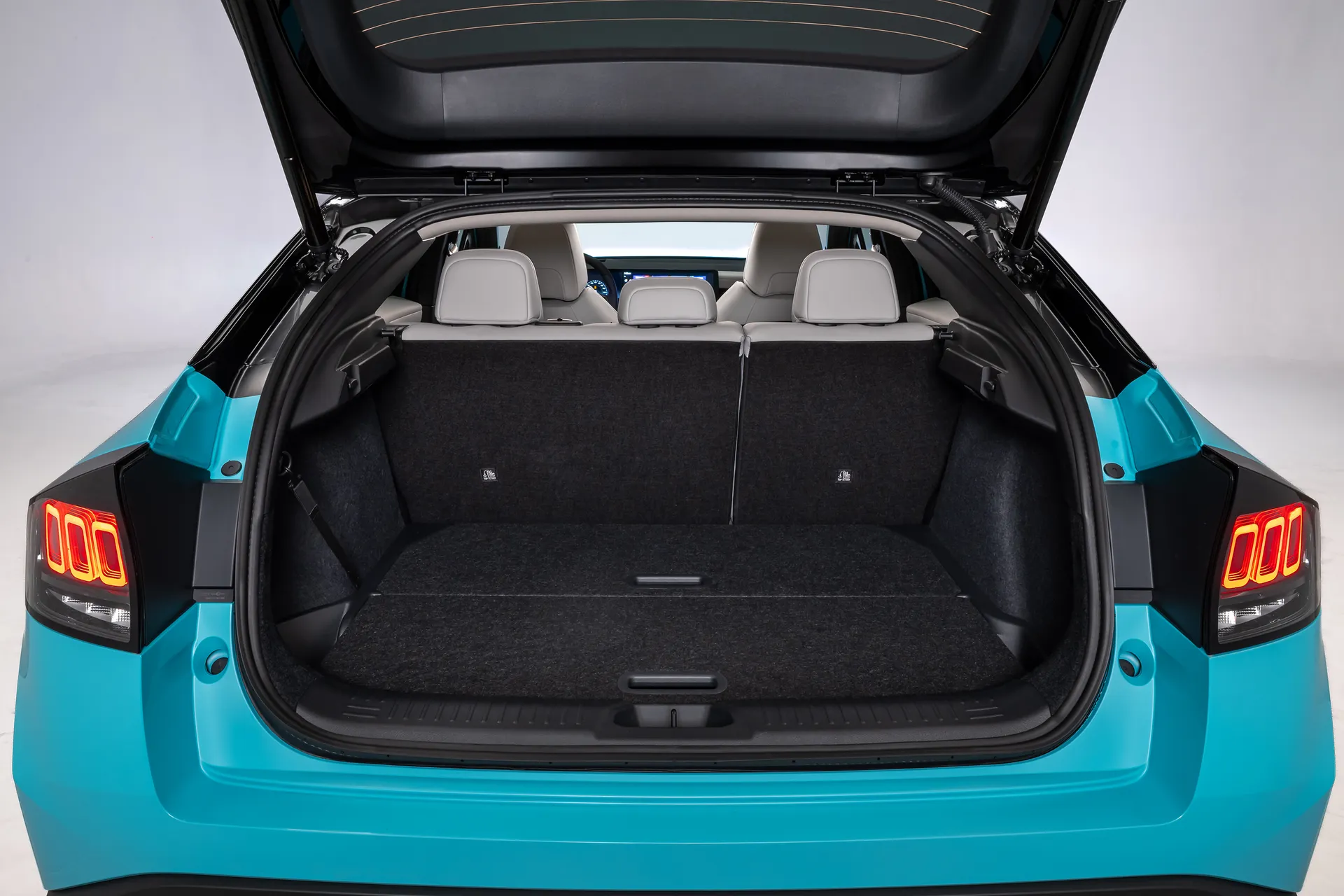
Normally, when talking about a car that's not on sale yet, we'd steer you towards the old version, which in the Leaf's case can be bought for as little as £5000. It's a very different proposition from the new car, though, so if you want something more like the new Leaf that you can buy right now, there's always the option of a used Ariya, which can be picked up from £20,000. Or if that's too big, consider a lightly used or pre-registered Skoda Elroq.
Trim levels and standard equipment
Along with pricing, the Leaf's trim structure and specs hadn't been confirmed at the time of writing. For now, we at least know that there will be seven "expressive" colour options, including the rather lovely 'Luminous Teal' seen daubed on the car in these photos.
Ask the heycar experts: common questions
How long does it take to charge a Nissan Leaf?
When is the new Nissan Leaf coming out?
Nissan Leaf prices
Get our latest advice, news and offers
Keep me updated by email with the latest advice, news and offers from heycar.
By submitting you agree to our privacy policy




